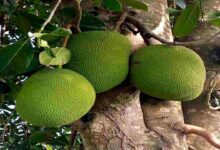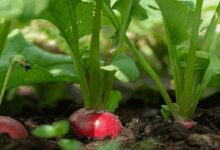Drumstick Cultivation: Drumstick is very beneficial for dairy animals, know the method of cultivation
Drumstick Cultivation: The Indian subcontinent has long cultivated an unusual plant called drumstick or moringa, which has a wealth of medicinal and nutritional benefits. In South India, various parts of the drumstick have long been used in food, but in North India, their importance is slowly being more widely acknowledged. Apart from being beneficial from a health point of view, it has evolved as a viable and sustainable option for farmers from an agricultural point of view.

Characteristics and Importance of Drumstick
Almost every component of the drumstick plant, including leaves, flowers, fruits, seeds, bark and roots, has medicinal uses. This plant is rich in protein, calcium, iron, potassium and vitamins A, B and C, apart from a strong immune system. Eating drumstick increases physical strength, improves digestion and strengthens the body’s defenses. A research found that drumstick leaves contain seven times more vitamin C than oranges and four times more calcium than milk. Simplicity of cultivation: low cost, big profit
Drumstick cultivation does not require special equipment or significant financial expenditure. Even with low irrigation and dry, low-fertile soil, this plant can thrive. It is possible to cultivate drumstick using varieties such as PKM-1, PKM-2, ICOM-1 and ICOM-2 that bear fruit twice a year. The bush bears fruit for four to five years after planting.
Planting and land preparation methods
It has been shown that drumstick can be grown on sandy loam soils with a pH of 6.0 to 7.5. Plants are planted in trenches of 45 x 45 x 45 cm, with a spacing of 2.5 x 2.5 m between each plant. Ten kilograms of rotten cow dung manure are added to each trench for sowing seeds or seedlings. The best time to plant is from June to September.
Organic Farming and Nutrition Management
Manure and fertilizers should be applied to the plants from time to time to get better production. The use of cow dung manure and biofertilizers like Azospirillum and PSB has proved to be very beneficial in promoting organic farming. Moreover, it results in less chemical fertilizer requirement.
Management of Diseases and Pests
The “Bihar Hairy Caterpillar” (Pillau), which mostly attacks Moringa, can kill the plant by eating its leaves. Control is possible by spraying Surf solution initially. Adult pests are sprayed with Dichlorvos (0.5 ml/liter of water). Apart from this, sometimes fruit flies attack the fruits, which can also be controlled by Dichlorvos.
Harvesting and Production Capacity
Fruits are harvested in September and October and February and March. On average, 40-50 kg of fruit can be obtained from one plant. Remember that to maintain strong demand and high prices in the market, the fruits should be harvested before the fibers are visible.
Industrial and Export Importance of Moringa
Moringa seeds are used to extract high-quality oil. Its seeds are dried and exported in powder form. Many businesses are making Moringa-based medicines, such as powder, tablets, oil, etc. and selling them abroad. The paper and textile industries also use its pulp, gum and leaves.
Use as Animal Feed
Nowadays, Moringa is also grown as nutritious animal feed for dairy cows, which has increased milk production and improved animal health.

